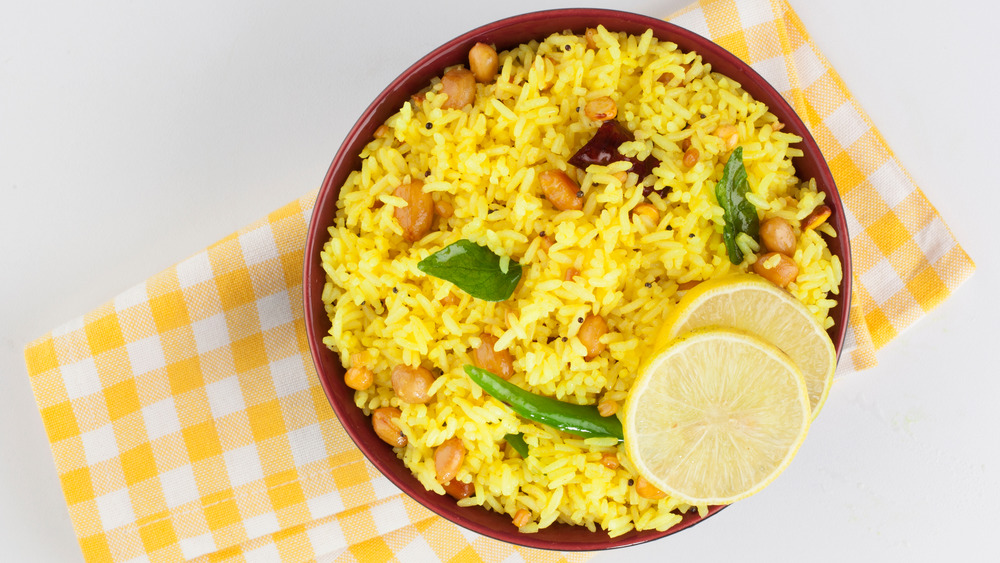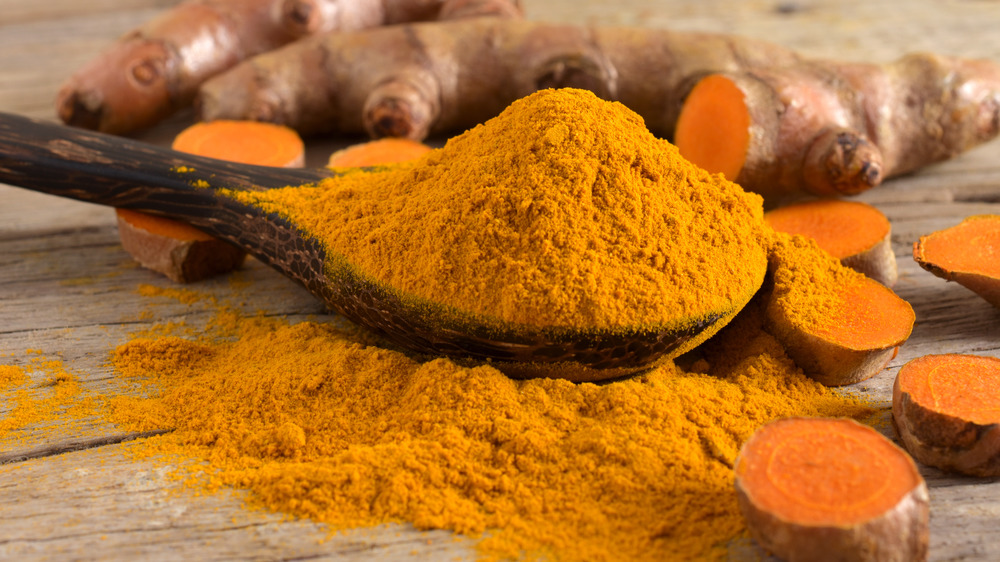This Is Where The Color Of Yellow Rice Comes From
There are many varieties of rice from all over the world, according to Serious Eats; and if you're like us and you love eating rice, then you've surely seen yellow rice before, even if you haven't had the chance to cook with it in your own meals yet.
If you purchase yellow rice from your local grocery store or online, it could have added ingredients you probably want to steer clear of in large quantities. For example: the yellow rice by McCormick's popular brand Zatarain's. In the nutrition facts listed on their website, the sodium alone in a single serving is 700 milligrams, making it a potentially unhealthy choice with frequent consumption. The FDA suggests healthy adults consumer no more than 2,300 milligrams of sodium per day, meaning this rice contains over a quarter of your daily recommended allowance.
Your other (and likely healthier) option is to make yellow rice yourself. If this peaks your interest, the next question you might have is where the "yellow" in yellow rice come from? Well, in many cuisines it come from one key spice, turmeric (via Epicurious). While scientific journal Critical Reviews in Food Science and Nutrition reports turmeric has only started to be considered a popular spice in the United States, it's always been major in other countries, specially in Asia.
Why turmeric?
With the demand for turmeric on the rise between 2004 and 2011, when its popularity increased astronomically by 70 percent according to FiveThirtyEight, it's quickly becoming a staple spice in a lot of households and can be spotted in the recipes and names of popular foods across the U.S. — like Starbucks' infamous Turmeric Latte (via Starbucks). This is a good thing for consumers, as studies show that turmeric's active ingredient, curcumin, is anti-inflammatory and an antioxidant (via Healthline). So not only does turmeric provide a beautiful sunny color to yellow rice, but it also can support your health in seriously positive ways.
NBC News has suggested turmeric also has the ability to improve ailments like cardiovascular disease, arthritis, Crohn's disease, and more. In addition, Healthline says that the curcumin found in turmeric plays a role that goes way beyond just preventing disease; There are anti-aging benefits as well. With all of the benefits and potential of this vibrant spice, there's a lot of reasons to use turmeric in your meals — especially with yellow rice. It is worth making this basic dish for yourself and taking in all the benefits turmeric has to offer.

